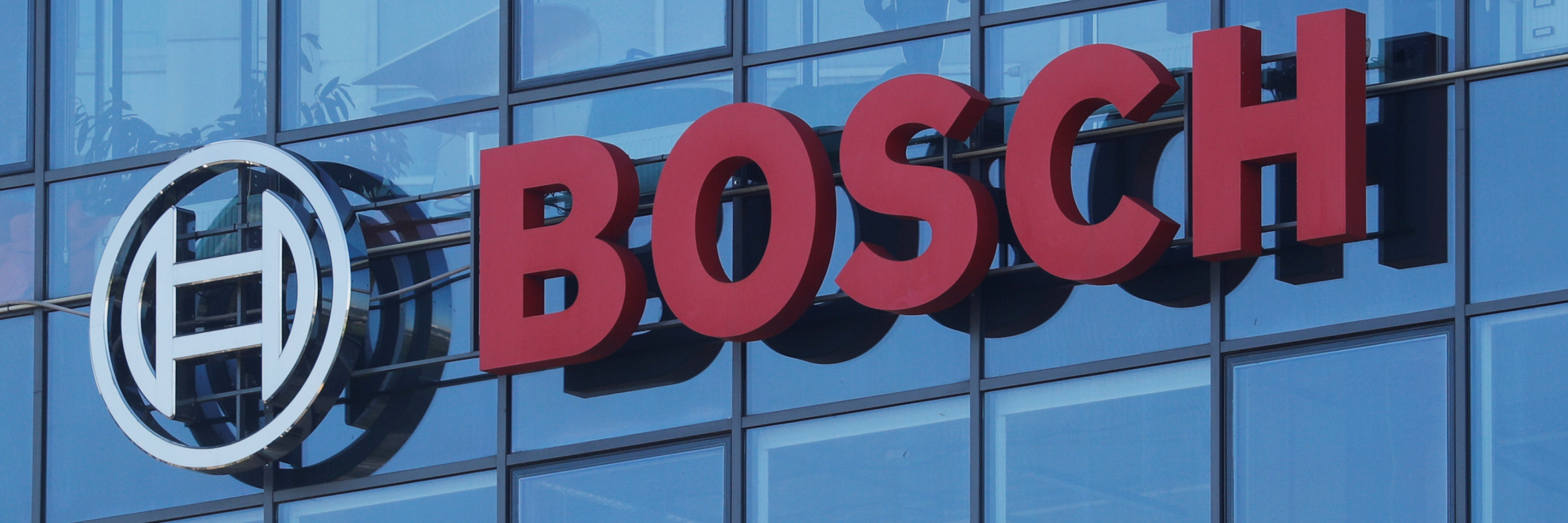
Personalis Inc
NASDAQ:PSNL

Earnings Call Analysis
 Summary
Q3-2023
Summary
Q3-2023
In the third quarter of 2023, revenue grew by 23% year-over-year to $18.2 million, propelled by increased biopharma customer volume. While the gross margin declined sequentially to 19.1% due to lower selling prices and higher facility costs, it improved from the year before. Operating expenses included a one-time charge of $5.6 million for vacating a facility. Despite a widened net loss of $29.1 million, the company has a solid balance sheet with $120.7 million in cash and expects the current balance to last around 2 years. Looking ahead, the fourth quarter revenue is projected between $19 million to $20 million, with a raised full-year guidance anticipating $73 million to $74 million. The annual net loss is forecasted at $103 million, down from $113 million last year, and cash usage is projected below $70 million, a $50 million improvement over the prior year.




























 You don't have any saved screeners yet
You don't have any saved screeners yet

Good afternoon and welcome to Personalis Third Quarter 2023 Earnings Conference Call.All participants will be in a listen-only mode. [Operator Instructions] After today's prepared remarks, there will be an opportunity to ask questions. [Operator Instructions]. Please also note that this even is being recorded today.I would now like to turn the conference over to Caroline Corner, Investor Relations. Please go ahead.
Thank you, operator. Welcome to Personalis' third quarter 2023 earnings call.Joining today's call are Chris Hall, Chief Executive Officer and President, and Aaron Tachibana, Chief Financial Officer and Chief Operating Officer, and Rich Chen, Chief Medical Officer and EVP R&D.All statements made on this call that do not relate to matters of historical facts should be considered forward-looking statements within the meaning of US securities laws. For example, any statements regarding trends and expectations for our financial performance this year and longer term, cash runway, revenue expectations and timing, reimbursement goals, size and booking of orders, products, services, technology, clinical milestones, the outcome and timing of reimbursement decisions, expectations for existing and future collaboration activities, health expectations, the outcome of legal proceedings to enforce patents, the validity or enforceability of our patents and our market opportunity business outlook. These statements are subject to risks and uncertainties that could cause actual results to differ materially from our current expectations. We encourage you to review our most recent filings with the SEC, including the risk factors described in our recent Quarterly Report on Form 10-Q. Personalis undertakes no obligation to update these statements, except as required by applicable law.Our press release for the third quarter 2023 results is available on our website, www.personalis.com, under the Investors section and includes additional details about our financial results. Our website also has our latest SEC filings, which we encourage you to review. A recording of today's call will be available on our website by 5 PM Pacific Time today.Now, I would like to turn the call over to Chris for his comments on third quarter business highlights.
Thank you, Caroline. Good afternoon, everyone, and thank you for joining us.We're thrilled with the progress we made since we updated you in August. We exceeded our revenue goals for the third quarter and increased our full-year guidance. We presented compelling data on NeXT Personal with the team at TRACERx. We launched the NeXT Personal clinical test. We deepened our collaborators in breast cancer, and we strengthened our management team. I'm very proud of the team at Personalis for delivering on the commitments we've made to investors and our continued focus to execute our win in MRD strategy and establish NeXT Personal as the centerpiece of a better management paradigm for cancer patients.Let's start with our commercial traction. As mentioned in our press release, we reported $18.2 million in quarterly revenue powered by nice growth in each of our business lines, biopharma, enterprise sales, including Natera, and population sequencing for the VA MVP. That performance represents 23% year-over-year growth. I'd like to point out that we've managed this growth despite an environment where biopharma companies have been cutting their spending on clinical trials and related services, and the actions we took earlier this year to streamline and remove non-profitable business. Given our commercial traction, we're raising our guidance to $73 million to $74 million.Now, while our revenue goal in Q3 exceeded our goals and allowed us to increase guidance, we're most excited about the progress we're making in executing our win in MRD strategy. MRD testing, using liquid biopsy tests to find residual or recurrent cancer and to monitor treatment effectiveness is expected to grow into a $20 billion plus market. As a reminder, our win in MRD strategy has 4 pillars. First, focus and launch our test in cancer types, where an ultrasensitive liquid biopsy test can unlock significant value for patients, payers, and partners. Second, to drive reimbursement by developing robust clinical evidence and partnering with the top global collaborators. Third, to commercialize NeXT Personal with a partner-centric model. And fourth, to leverage our deep biopharma relationships to power the development of clinical evidence by the use of NeXT Personal in clinical trials.I'll next review each of these strategies and the progress we've made this quarter. First, starting with indications for ultra-sensitive tests. We've chosen to focus on early-stage lung cancer, breast cancer, and immunotherapy monitoring because a high-sensitivity test is uniquely suited to detect recurrence very early and to guide treatment decisions and to de-escalate low-risk patients off of therapy.Let me elaborate about high sensitivity and why that matters for our key indications, as it's at the heart of our strategy. We detect cancer at levels down to one part per million. What this means is that NeXT Personal may find residual or recurrent disease when there is only as few as one circulating cancer DNA fragment among a billion normal DNA fragments in the blood, allowing our test and platform to detect cancer earlier than competitive technology. And it can do this not just for some patients, but consistently for most patients across many different cancer types and stages. We believe NeXT Personal can provide confidence that, 1, when we detect cancer, we see it earlier, when patient management can be modified to result in more favorable outcomes, and 2, when we don't see cancer, the patient will likely remain disease-free and may not need additional therapy.In early lung cancer and some types of breast cancer, our approach is particularly well-suited to escalate and de-escalate therapy. Detecting the cancer recurrence early may be the key to getting a patient the therapy they need to save their lives, and NeXT Personal sensitivity may be key to identifying patients with low risk of recurrence so they can potentially avoid additional treatments. We've kicked off our commercial journey by launching our NeXT Personal test for early access clients. We've confirmed this quarter that NeXT Personal can detect cancer as low as one part per million, and we've completed the analytical studies and documentation needed to launch the test. The launch has been met with robust early demand, with several doctors sending us samples. We continue to deepen the clinical evidence of our tests with early adopters and expect to ramp-up rapidly post-Medicare coverage. As a reminder, we're managing towards obtaining Medicare coverage in late 2024.The second part of our win in MRD strategy is to develop clinical evidence with top institutions and thought leaders around the world to demonstrate the clinical validity and utility of our tests. In early stage lung cancer, we're working with TRACERx Consortium led by lung cancer expert Dr. Charles Swan and teams at Cancer Research UK, the Francis Crick Institute, and University College London. Previously, this group conducted research on prior generations of MRD assays and identified significant opportunities for detection improvement and is now using NeXT Personal to determine the clinical value of an ultra-sensitive assay for early stage lung cancer. The TRACERx team presented compelling clinical evidence at ESMO a couple of weeks ago, highlighting the power of the NeXT Personal assay. There were three key findings. First, we are seeing higher sensitivity, up to 4 times higher, than other liquid biopsy tests analyzed by TRACERx. Second, we found lung cancer 6 to 11 months ahead of standard imaging and significantly ahead of other tests. And third, we have the ability to determine low and high recurrence risk, which could lead to improved therapy decisions. We expect the complete cohort results from the TRACERx study to be published in mid-2024.In breast cancer, we're actively processing samples from our Royal Marsden collaboration. Royal Marsden is one of the leading global institutions in breast cancer, and our work is focusing on patients with early stage disease for several subtypes, including ER positive, HER2 positive, and triple negative breast cancer. The Royal Marsden collaboration provides us access to a well-annotated set of samples with known clinical outcomes. We plan to use our work here to provide a clinical data set to support our medical coverage of breast cancer. The data set is expected to be showcased in mid-2024.Excitingly, we recently added two new collaborators in breast cancer to augment our path for Medicare coverage. First, we're now working with Dana-Farber in breast cancer, which provides us a robust set of HER2 respectively gathered samples, and also the Institut Curie, which gives us access to a study that was a prospectively gathered triple negative breast cancer patients. These are extremely important because we now have multiple prospective cohorts that we can leverage to drive both commercial success and underpin our reimbursement submission. Additionally, for breast cancer, we have our own prospective clinical trial called B-STRONGER, and it has begun. We've made progress establishing committed sites and are targeting to begin enrolling patients late this year.For IO-therapy monitoring, we have multiple collaborations underway. Our key study is a pan-cancer data set with Vall d'Hebron Institute of Oncology or VHIO, designed to demonstrate and leverage the efficacy of NeXT Personal for IO-therapy monitoring. VHIO gives us access to a large, well-annotated bank of prospectively gathered samples that are the cornerstone of our efforts to achieve reimbursement coverage for pan-cancer IO-therapy monitoring. We have begun testing VHIO patient samples, and we expect to present clinical data next year. This is an exciting collaboration, and it joins existing work we've announced on melanoma and IO-therapy with the University Medical Center Hamburg-Eppendorf, also known as UKE, and also our Duke relationship.We're driving hard to process all the samples across these many collaborations and expect collaborators and investigators to record data through 2024 and to be able to be submit this data into multiple publications. With all this data gathered, we plan to submit for reimbursement coverage in all 3 cancer types next year, and we're targeting to achieve coverage for at least one of them in 2024.The third part of our strategy is a unique partner-centric path towards commercialization. We're seeking partnerships that help us amplify our message to the marketplace, helping us market and sell our test in a capital-efficient manner. We continue to work on that core part of our strategy, and we believe it provides significant opportunities to accelerate commercial traction while minimizing investment.The fourth and final part of our strategy is to leverage our biopharma relationships and establish infrastructure to submit NeXT Personal as the assay of choice to determine clinical trial enrollment, monitor therapy effectiveness, and develop new insights into treatment pathways. This quarter, we continue to deepen our business with pharma clients, and in particular, driving next personnel forward in several discussions. Growing these relationships is important to us, and in September, we announced that Ms. Deepshikha Bhandari joined Personalis as SVP Regulatory Quality and Clinical Compliance. Most recently, she was VP Regulatory Affairs at GRAIL and has also held leadership roles at Roche Diagnostics. She and her team are charting a path forward to establish our NeXT Personal assay as the clinical trial enrollment assay of choice for our pharma partners.NeXT Personal was the key driver of revenue growth moving forward, and over the last quarter, we've demonstrated strong performance for the test and one of the best data sets available globally. We've deepened the list of our blue-chip collaborators, and we launched our product.Our product progress and executed on our win in MRD strategy has been impressive, but we've also made progress in other parts of the business. As we mentioned before, our platform is powering personalized cancer therapies. As announced earlier this year, we are a key partner for Moderna's clinical trial work as they pursue regulatory approval of their personalized therapies. We are partnered with Moderna across their clinical studies, and as Merck and Moderna disclosed, they've begun enrolling patients in their Phase 3 clinical trial for melanoma. We expect this partnership to be a significant driver of revenue for us in 2024 and 2025. With thousands of new cancer patients each year in the US alone, our aspirations are for Personalis' technology to power the development of next generation vaccines and therapies as we are doing with our Moderna partnership.Lastly, turning to our population sequencing business, we recently received a new task order from the U.S. Department of Veteran Affairs' Million Veterans Program known as the VA MVP in the amount of $7.5 million. This relationship stretches back several years, and we are proud to continue supporting the VA MVP in their initiatives.It's an exciting time at Personalis with much progress across multiple fronts, and we appreciate our collaborators, partners, and investors being part of our journey to establish an ultra-sensitive test at the forefront of the MRD market.With that, I'll now turn it over to Aaron to review our financial results for the quarter.
Thank you, Chris. We executed very well in the third quarter and continue to meet our financial commitments. I will be providing detail about our third quarter financial results and guidance for the fourth quarter and full year.Total company revenue for the third quarter of 2023 was $18.2 million and increased 23% compared with the same period of the prior year, primarily due to higher volume from biopharma customers, enterprise, which includes Natera, and population sequencing volume from the VA MVP. Gross margin was 19.1% for the third quarter compared to 28.7% for the prior quarter and 16.7% for the same period of the prior year. The sequential decline of 9.6% was primarily due to the impact of lower selling prices to Natera as a result of their volume-based pricing structure and to a lesser extent, higher allocated facility costs to the operations lab now that all production testing has been moved from Menlo Park over to the new Fremont facility. The year-over-year increase of 2.4% was primarily due to operating leverage from higher revenue volume.Operating expenses were $34.3 million in the third quarter and included a one-time non-cash impairment charge of $5.6 million for a write-down of the remaining lease asset for the Menlo Park facility that we recently vacated, compared with $29.7 million for the same period of the prior year. Excluding the one-time charge, operating expenses were $28.7 million and decreased $1 million from the same period last year. We continue making progress to reduce our expense base by limiting investments to high-priority initiatives, such as deepening clinical evidence to pursue reimbursement, transitioning to lower-cost sequencing platforms, and others. R&D expense was $16.7 million in the third quarter, compared with $15 million for the same period last year, and SG&A expense was $12 million, compared with $14.8 million for the same last year.Net loss for the third quarter was $29.1 million, compared with a net loss of $26.5 million for the same period of the prior year. Excluding the non-cash impairment charge mentioned earlier, the net loss would have been $23.5 million. The net loss per share for the third quarter was $0.60, and the weighted average basic and diluted share count was $48.7 million, compared with the net loss per share of $0.58, and a weighted average basic and diluted share count of $45.9 million for the same period of the prior year.Now on to the balance sheet. We finished the third quarter with a strong balance sheet with cash and short-term investments of $120.7 million. During the quarter, we used $16.5 million of cash primarily to fund operations, and we expect our cash balance to last approximately 2 years.Now, I'd like to turn to revenue guidance. For the fourth quarter of 2023, we expect total company revenue between $19 million to $20 million, revenue from pharma tests, enterprise sales, and other customers between $18.5 million to $19.5 million, and revenue from population sequencing of approximately $0.5 million. And for the full year of 2023, we have increased our revenue guidance due to the strong demand for both pharma and enterprise sales. We now expect total company revenue between $73 million to $74 million, with oncology revenue from pharma, enterprise sales, and other customers between $64 million to $65 million, and population sequencing revenue to be approximately $9 million. In addition, we expect net loss of approximately $103 million, which is $10 million lower than the loss of $113 million in 2022, and the net loss of $103 million includes the one-time charge of $5.6 million for the Menlo Park facility. Cash usage is expected to be below $70 million and represents a reduction of approximately $50 million from 2022. We look forward to updating you on our progress during the next conference call in a few months.And with that, I will turn the call back over to the operator to begin the Q&A session. Operator?
We will now begin the question-and-answer session. [Operator Instructions] And our first question will come from Patrick Donnelly with Citi.
Maybe 1 just on the MRD side. You talked about the pharma opportunity there. Can you just talk about what the funnel looks like at the moment in terms of those opportunities? Just trying to think about how to size that revenue opportunity, the activity you're seeing, and expectations going forward here?
As you know, we've worked with, over time I think we've worked with 16 of the top 20 biopharma companies with our ImmunoID platform. And that platform powers a lot of the translational kind of work that they do. So we've built relationships into many of those companies. We have been engaged in discussions. We originally launched it as an RUO product and we've been building the revenue base in NeXT Personal over the last year. We announced a relationship with AstraZeneca, where they've begun using the assay and some their efforts. And as the data has come out with TRACERx, we've continued to get significant interest. We've been benchmarking pilot studies with several biopharma companies. And we expect the revenue on the biopharma side for NeXT Personal to be one of the nice revenue growths in 2024 as we move through the year. Those trials can be larger and can be significant. So we're excited about the journey there.
And then you mentioned the reimbursement side, going for Medicare coverage in 2024. Can you just talk about, I guess, the pathway there, what hurdles you have to clear? Reimbursement timing is always tricky. So I guess, when are you thinking that could come during the year? And again, what are the key catalysts, milestones we should be keeping an eye out for as you progress towards that?
Absolutely. So, I mean, it is one of the things that is always tricky to try to predict timing because there's a lot of it beyond our control. But what is in our control is getting the samples with collaborators and we've picked some of the top collaborators. I think there's 7 or 8 studies now we're working with across our core indications. And the key thing there is to have analytic validity studies that show that the assay is robust across multiple different conditions and gets the performance numbers that we did. We've completed all that with the launch of the product. We'll be submitting that data for publication. And that'll be 1 of the data sets, the publication there that will underpin reimbursement success and progress. The others will be clinical evidence in each one of these indications. And so the core thing to watch for over 2024 is the publication of the clinical evidence, because that publication of the clinical evidence that the test is valid in lung cancer, breast cancer, I/O therapy, and that there's clinical utility there, i.e. we can accelerate a doctor and a patient knowing when cancer is present. Getting that published will be important to get through the coverage hurdle with Medicare. And so we plan on having all that accomplished across these indications and be able to submit for coverage in 2024. And our goal is to have one of those done, Patrick, by the end of 2024. Because I think we'll always hit some roadblocks along the way, depending on the different indications. So we're shooting to be able to submit for all 3 and we're targeting to get 1 over the finish line by the end of the year.Absolutely. And you know, for us, the quarter has been really one of sort of checking off more and more boxes of lowering the risk for investors. The risk of getting the test live, we've checked that off. The risk of the early clinical evidence, we checked that off this quarter with some great evidence. And the next big one is reimbursement. And we keep stitching together the data to be able to check that off. So that's where we are.
And our next question will come from Tejas Savant with Morgan Stanley.
Hi, this is Jason and for Tejas. So my question is, the VA MVP extended your contract for next year for $7.5 million. This is down from $10 million the previous year. What do you think was the driver behind this lower rate? And how should we think about this number going forward?
In terms of the VA contract, you know, they don't say specifically the rationale for dollar amounts here or there. But it's our belief that was what they had in line from a budgetary standpoint. It was down a little bit. In terms of the way we look at that $7.5 million, it's good business. We've been doing business with the VA for several years now, back to 2012. Our focus is really on the oncology business. And so everything we do inside of our company is focused on driving the clinical evidence, the commercial engine, getting towards reimbursement, driving MRD with pharma, working with PCV manufacturers to be able to go and exploit that technology. And so in terms of long answer here, but the focus is really on the oncology revenue. So the VA has been nice business for us in the past, but looking forward, the oncology business is really more important for us.
And if I may ask a follow-up, you ended the quarter with a $121 million in cash. So you previously guided that this providing you about 2 years of cash runway. So it's another 3 months to pass-off. How do you think about cash management and financing opportunities over the next year?
Yeah. So earlier this year, we took some actions to extend our cash runway, reduced expenses. We continue to reduce expenses every quarter. We're looking at discretionary spend and we're looking at what we absolutely critically need to go and invest in, right. That's along the path to go get clinical evidence done or reimbursement, other types of things where we can defer or eliminate spend. We've been doing so. And over the last few quarters, we've been continuously saying we have 2 years of cash runway, and that's because we're successful in pushing things out, deferring in different places, right? And so in terms of where we're at today, we believe we have a strong balance sheet to weather the storm. The capital markets aren't very good. As Chris mentioned, we have several milestones in front of us here in 2024, meaning, get more clinical evidence out, being able to submit for reimbursement and our targets are to be able to get reimbursed for at least 1 cancer type in 2024. So we believe we have enough capital to get us to reimbursement and be able to start to go up the ramp and then start to show some revenue for NeXT Personal in the clinic.
And our next question will come from Dan Brennan with TD Cowen.
Maybe just on the commercial partner, can you just kind of remind us on the type of partner you're looking for, kind of how advanced those discussions and when something like this might come about?
Yeah. I mean, thanks, Dan. We've always said that like since -- finding a commercial partner was key to ultimately helping us bring this to market. I've always believed that you're better off partnering these types of things that go on a lot in this particular climate and in particular, it's better to do that. We think that the type of partner that works well is a partner that doesn't have an MRD solution, but yet calls on and talks to oncologists so that, they have those call points and they have those relationships and they can integrate this in. And ideally, that partner would be able to integrate it into their into their call cycle and their talk track and their discussions that helps to distinguish them of having a cutting edge product that they're bringing that adds luster to their brand. And so we've been engaging in those discussions, continue to engage in discussions, don't have anything to report at this point, but it's been key part of our strategy because quite frankly, if we can find a partner that helps us commercialize through the journey, then that reduces dramatically the amount of capital that we need to build a sales and marketing engine. And I've done this in several companies now built these out. I know how to do that, but it costs capital. And so being able to leverage somebody to do it through the journey is part of our strategy. We haven't been able to execute on that yet, but I think having the product live and having some great clinical data is, and we're sitting where we are right now. And we feel like we're well situated to continue moving the ball down the field.
And would that be something more likely after Medicare coverage gets in place? So you have more power or just kind of any sense on timing of a commercial partnership?
When we identify the right partner and get an agreement put together is when we would announce something. I think sooner is always better than later in these things, honestly. The reason is because this current period that we're in, we call it early access program. So we have a set of early adopters that, and we have demand that we're sort of working through. This is the time that you work through the systems, you work through your call points, your talk tracks, you work through your marketing material, you build more clinical evidence, you start to develop advocates. And so, and then when we get Medicare coverage, we expect to be all systems go, pushing the gas down and really, trying to build revenue as quickly as we can on the back of that. And so, ideally having a commercial partner before we do that, so we learn how to work together would be what we're shooting for.
Yeah. So we did announce that we've launched the product. We have an early access program. So we are engaged with oncologists. We have real tests coming in to our operation now. And in terms of the sales team, we have a small sales team today, but we will continue to add to that and build that until at the right time until we have a partner, right? So we're planning for success. And like Chris mentioned, a partner is going to help us be capital efficient. We won't have to go and hire a really large sales force and spend a lot of money on that, assuming we can find a partner sooner rather than later, but we're going to continue down the path to build a commercial team until we do have something done.
And maybe just one follow-up, just on filing the 3 assays next year. Could you just give us a sense of like, by the time you file, what kind of dialogue will you have had with Medicare ahead of it, just to ensure like you've got the right data package in place? And I guess it's fair to think either colorectal or breast will be the bigger opportunity, just given the size of the market or that that'll be, you know, one of those two will be the area where you probably feel you have the most opportunity, just maybe any color on those 2 questions?
Well, I think it's good, it's an interesting. Yes. So the answer is, yeah, we will engage. We've already had dialogues with Palmetto and we'll continue to have dialogues with them as we go forward. So the 3 indications are lung, breast and IO, they're in different spots. So lung is 1 where we have a shot to be really like the kind of the early, the first coverage really in that indication, I think it's fair to say in early stage lung. And we think the data is really compelling and really great there. In IO-therapy, it was one of the first indications after CRC that got coverage. And so there's a really nice benchmark set of data out there that we feel like we'll have as robust or more complete or larger data set can exceed that in size. And so we feel like IO we're well-positioned. In the breast cancer, we're just stitching together a wealth of studies as we really push down on that. That's one where there's coverage now by another player. And so you get some sense by what other players have done, what you need to do. And so we have a good sense of that. But lung is probably more open and the other ones are more clear about what we need to do, but we feel like we'll be in a well good position across the 3.
And our next question will come from Mark Massaro with BTIG.
So my first one, it is great to see the initial TRACERx study data readout. Just for housekeeping. Is it right that we should see that next group of patients data readout around mid-2024? That's the first part of my question.
Yeah. Hi, this is, Rich. I think that's reasonable. That's a reasonable target for us. Things can intervene to kind of make it come in or come out a little bit in terms of timing, but that's probably a reasonable assumption.
And then Rich, this one might be for you. I think one of the interesting things about TRACERx is that I think, it started in non-small cell lung cancer, and I know that's a big focus. But I believe other cancer states like melanoma, prostate and renal cancer are being investigated. Is that the case still? And are you guys having some conversations with Charlie's group about potentially expanding beyond lung cancer into other cancer types?
Yeah. We haven't publicly talked about expanding beyond lung cancer, because lung cancer is our major focus. But you can imagine there are discussions about different avenues, it's not just cancer types, but expanding our relationship with TRACERx.
Okay. I also wanted to ask about NeXT Dx, which I didn't hear any comments on. How are the reimbursement discussions going there? And then any update in terms of adoption and demand for the test?
Yeah. So we continue the dialogue on NeXT Dx and reimbursement, we are still aspirational to get coverage into the year, still possible. And we're managing towards that. We have a small handful of reps in the field, and they do talk about it, and they work on it and we are seeing samples coming in. We have always believed that works hand in glove with IO monitoring for NeXT Personal. And our early experience so far is that that's true, so that the products often may be ordered together. When a patient is diagnosed in their later stage, and they go on IO-therapy, or they're a candidate for that, the doctor will want to both create a baseline for NeXT Personal, while at the same time doing the therapy selection. And so we're seeing in our early access sites that that's the case. And so we're optimistic that the products will work together in the marketplace from a messaging standpoint. So rather than send the CGB test to vendor A, and then send the NeXT Personal to us, it would be better to be able to just send it both to us and have a one-stop shop. And so we're seeing evidence that that will happen. And so the 2 products, the growth will actually happen synergistically.
Last question from me is on the Moderna partnership. I believe Moderna's Phase 3 melanoma clinical trial is expected to start in the second half of the year. Do you have any update on that? And how should we think about Moderna and some of that broad interest on personalized cancer vaccines into the model in 2024?
So yes, so Moderna did start enrolling patients in the Phase 3 trial in the second half, like was planned. Things did get pushed to the right a little bit. And so the enrollment has been slower than what we originally thought. So although we're recognizing some revenue here in the fourth quarter, it's smaller than what we originally thought. So it's our expectation now at this point in time that the ramp should start here in 2024 and then into 2025, right? So the next 2 years could be quite lucrative for Personalis in terms of revenue ramp from the Phase 3 work with Moderna.
[Operator Instructions] Our next question here will come from Swayampakula Ramakanth with H.C. Wainwright.
I just want to understand a little bit more about what you're doing in terms of partnerships for commercialization. So you said that's one of your pillars for growth. Can you expand on that?
Yeah sure. And we have a test that we believe is the most sensitive MRD test. We think that product is unique and differentiated. And my own experience in commercializing these products with partners is that when you have a set of relationships with oncologists or other physicians as a sales group, having a new cutting edge product that you can bring in and walk in and talk to is actually something that distinguishes you and makes you more valuable. And that's good. And so we're seeking partnerships that can help to augment the partners set of products to help them grow and build their talk tracks inside customers and deepen their relationships and broaden their offering. At the same point in time for us, while we know how to do this and we know how to build these products, it's expensive to do it by ourselves. And we'll never in a relationship where we turn it over to somebody else, but being able to commercialize side by side would allow us to move a lot faster with a lot less investment and a lot less fundraising needed. And so one of the things we've been very focused on is how do we become ever more efficient, ever more focused on the mission at hand here, which is to capture a decent part of this $20 billion market. And part of that is having a partner to allow us to move faster. Because that will either mean that we'll have less investment capital needed to be able to dramatically scale the company's revenue or it'll free up more capital to invest right back into the clinical study evidence development. Neither one of those 2 scenarios is good for shareholders. So that's what we're focused on.
And our next question will come from Mike Matson with Needham.
This is Joseph on for Mike. Hopefully this wasn't addressed already, but I'm looking through transcripts right now. I'm not seeing it. So I was just wondering if maybe you could talk about your expectations for cash burn as we start to move into 2024. I guess, is the strategy kind of similar to what was being done in 2023? I don't know if you guys still have much more wood to chop there. But as you're nearing some of these commercial milestones, we expect that to change pretty materially?
So in terms of the cash burn, cash runway question that you asked. So we ended the quarter into Q3 with close to $121 million of cash. And we said, has basically 2 years of runway. In 2023, our cash usage is going to be below $70 million. So looking into 2024, our expectation at this point in time and our estimates are for cash usage to be less than 2023 next year. Okay. And so, as we go forward, and there's going to be a multitude of different things that contribute to reducing the cash usage. A, some revenue growth. B, gross margin expansion. We have a lot of initiatives to improve gross margin. In addition, controlling our OpEx, similar to what we've done this year. We reduced OpEx, some $10 million excluding the impairment charge that you just saw. And we're going to continue to be prudent as we go into 2024.
And this concludes our question-and-answer session and also concludes today's call. Thank you for attending today's presentation. You may now disconnect your lines.